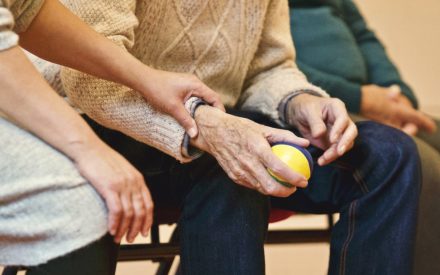Key Takeaways
• Caregivers responded to the changes and stresses from COVID-19 differently from non-caregivers
• Caregivers reported higher levels of stress than non-caregivers throughout the
pandemic
• Feelings of belonging to one another and to the community were critical in supporting
well-being for caregivers during the pandemic.
The COVID-19 pandemic brought many changes to the daily lives of families, especially for
family caregivers. Caregivers of those with illnesses and/or disabilities have taken on increasing
responsibility for care tasks due to social distancing and quarantine guidelines. To best support
caregivers and families both during and after the pandemic, it is critical to understand how their
lives were affected by the COVID-19 pandemic. We examined family caregivers’ experiences in
Wisconsin from May 2020 to June 2021. Some of the key findings are summarized below. To
learn more, view the full report here or our summary webinar presented in May 2022 through the North Central Region Aging Network webinar series. You may also be interested in our report detailing how the pandemic has impacted parents.
During the early stages of the pandemic, caregivers were more likely to feel that COVID-19 was
a threat to their communities and household than non-caregivers. Caregivers also took more
precautionary behaviors but used fewer positive coping behaviors. Specifically, caregivers were
less likely than non-caregivers to take walks outside, watch television, play games, have video
calls with family and friends, or attend religious or spiritual events online as ways to cope with
COVID-19. In contrast, caregivers were more likely than non-caregivers to report baking and/or
cooking as a coping strategy. As the pandemic temporarily eased in spring and summer 2021,
caregivers were less likely to perceive COVID-19 as a threat and took even fewer precautions,
consistent with the lower levels of community spread and the widespread availability of the
vaccines at that time.
Throughout the pandemic, caregivers experienced higher levels of stress than non-caregivers.
While the average level of stress for non-caregivers increased considerably during the peak of
the COVID-19 wave in January 2021 and then declined by June 2021, the levels of stress for
caregivers remained elevated throughout that entire period. In particular, new caregivers who
started caregiving between May 2020 and January 2021 reported the greatest increase in stress
over that timeframe, while non-caregivers reported the lowest levels of stress.
What helped caregivers to deal with changes and stress during the pandemic?
Feelings of belonging to one another and to the community were particularly helpful for
caregivers. Caregivers who felt a greater sense belonging to their community were less
impacted by COVID-19 and felt less stressed. Community-based support was critical in reducing
distress of caregiving during the pandemic.
How can we better support family caregivers?
First, more supports should be provided to caregivers experiencing heightened and sustained
levels of stress, particularly to new caregivers who started caregiving during the pandemic.
Caregivers often don’t know what services and supports are available to them, a challenge that
was likely even greater during the shutdowns and isolation of the early pandemic. Clear,
concise information about types of resources and help can support early access and reduce
stress and burnout. Another possibility is to tailor existing stress management interventions to
the context of pandemic to benefit all family caregivers. In addition, more research on the longterm effects of COVID-19 circumstances on the mental well-being of family caregivers is needed
to better understand the challenges of caregiving and ways to support caregivers during
stressful events.
To learn more, visit these resources:
- Webinar summarizing the trends among caregivers of adults:
https://www.youtube.com/watch?v=SRM_nEwEHds

 Families Under Stress: New Research Shows How Caregivers Have Adapted and Found Resilience throughout the COVID-19 Pandemic
Families Under Stress: New Research Shows How Caregivers Have Adapted and Found Resilience throughout the COVID-19 Pandemic AARP’s Website on Family Caregiving: When Family Caregiving Needs a Boost of Energy and Resourceful Thinking
AARP’s Website on Family Caregiving: When Family Caregiving Needs a Boost of Energy and Resourceful Thinking How is Wisconsin responding to social isolation and loneliness during the COVID-19 pandemic? Results from an Extension survey of partner organizations
How is Wisconsin responding to social isolation and loneliness during the COVID-19 pandemic? Results from an Extension survey of partner organizations


